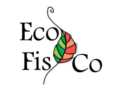Endogenous circadian rhythms in pigment composition induce changes in photochemical efficiency in plant canopies
- Egileak:
- José Ignacio García-Plazaola, Beatriz Fernández-Marín, Juan Pedro Ferrio, Josu G. Alday, Günter Hoch, Damien Landais, Alexandru Milcu, David T Tissue, Jordi Voltas, Arthur Gessler, Jacques Roy, Víctor Resco de Dios
- Urtea:
- 2017
- Aldizkaria:
- Plant, Cell and Environment
- Liburukia:
- 40
- Hasierako orria - Amaierako orria:
- 1153 - 1162
- ISBN/ISSN:
- 0140-7791
- Deskribapena:
-
There is increasing evidence that the circadian clock is a significant driver of photosynthesis that becomes apparent when environmental cues are experimentally held constant. We studied whether the composition of photosynthetic pigments is under circadian regulation, and whether pigment oscillations lead to rhythmic changes in photochemical efficiency. To address these questions, we maintained canopies of bean and cotton, after an entrainment phase, under constant (light or darkness) conditions for 30-48 h. Photosynthesis and quantum yield peaked at subjective noon, and non-photochemical quenching peaked at night. These oscillations were not associated with parallel changes in carbohydrate content or xanthophyll cycle activity. We observed robust oscillations of Chl a/b during constant light in both species, and also under constant darkness in bean, peaking when it would have been night during the entrainment (subjective nights). These oscillations could be attributed to the synthesis and/or degradation of trimeric light-harvesting complex II (reflected by the rhythmic changes in Chl a/b), with the antenna size minimal at night and maximal around subjective noon. Considering together the oscillations of pigments and photochemistry, the observed pattern of changes is counterintuitive if we assume that the plant strategy is to avoid photodamage, but consistent with a strategy where non-stressed plants maximize photosynthesis.

